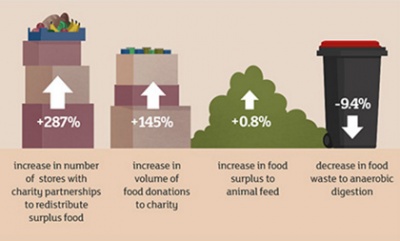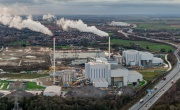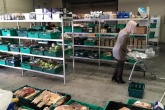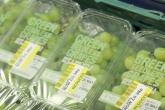Sainsbury’s reveals 10 per cent drop in food waste
Sainsbury’s has for the first time published data for its nationwide food waste generation, revealing that the supermarket cut its food waste by 10 per cent last year.
 Since first doing so in 2013, Tesco has been the only supermarket to regularly make its food waste information public, and in June the supermarket’s CEO Dave Lewis called for more companies to follow suit so that inefficiencies in the supply chain can be targeted and plans to tackle food waste developed.
Since first doing so in 2013, Tesco has been the only supermarket to regularly make its food waste information public, and in June the supermarket’s CEO Dave Lewis called for more companies to follow suit so that inefficiencies in the supply chain can be targeted and plans to tackle food waste developed.
Sainsbury’s this week released data for the first time, and though it doesn’t give a figure for its total food waste generation, the report notes that it created 1.16 kilogrammes (kg) of food waste per square foot in 2015/16, a 10 per cent decrease on the amount generated the year before (1.30kg).
Sainsbury’s also sent 26,910 tonnes of food waste to anaerobic digestion last year, the final rung of the store’s waste hierarchy for ‘unavoidable waste’, having declared itself the first grocery retailer to achieve zero waste to landfill in 2013. This figure is almost 3,000 tonnes lower than in 2014/15.
In March, it was announced that 10 per cent of the store’s national gas consumption was being provided by its own food waste through a partnership with food waste recycler ReFood, and the report has now said that its Cannock Chase store in Staffordshire is the first to have ‘come entirely off grid’ and be powered by green gas from its recycled food waste.
Redistribution
Sainsbury’s differentiates between food surplus (food that is kept in the human food supply chain by being sent for redistribution to charity or for animal feed) and food waste (food, and inedible parts of food, removed from the food supply chain to be disposed of).
Sainsbury’s says that its ‘first priority’ for surplus food is to see it donated to charities. According to the report, 833 Sainsbury’s stores, or 60 per cent, had donation partnerships with at least one local charity last year, up from 215 in 2014/15.

The retailer says that its target is for every one of its stores to have at least one food donation charity partner by 2020.
A further 8,922 tonnes of food surplus was sent for use as animal feed.
Sector must ‘work in partnership’ to have the desired impact on food waste
Mike Coupe, CEO of Sainsbury’s, commented: “Food waste is an issue where Sainsbury’s wants to continue to make an impact. We have been working hard over the past few years to tackle food waste in our business and ensure as much food as possible is redistributed to those who need it – we are proud of the development of more than 1,000 food donation partnerships with local charities.
“Over the last year, we have reduced total levels of unsold food, which has been achieved through a number of measures including sourcing more of our produce direct from growers and farmers and using improvements in technology.
“Our focus is to continue to look at food waste in our own business – as well as ensure as much food as possible is redistributed to charity. We know we can’t do it on our own – so we seek to work in partnership with others in the grocery, food and hospitality industries to have the impact that we all want to see.”
Focus on households

This summer, Resource visited the town to see how the project was coming together.
The year of testing is part of Sainsbury’s five-year, £10-million ‘Waste Less, Save More’ project, which will implement and develop measures that are found to be successful in Swadlincote.
Sainsbury’s food waste figures for 2015/16 can be found on the supermarket’s website.








